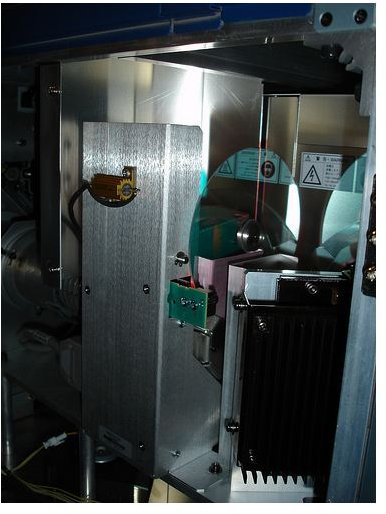Discussion: Different Multiplexing Techniques
Multiplexing is a method of combining multiple analog massage signals or digital data streams into one signal. The objective of this technology is to share an expensive medium for transmitting multiple signals. Actually, the low-level communication signals are divided into high-level logical channels using this technology. Furthermore, each channel is then used for transmitting one message signal or data stream.
Multiplexing Technologies
Here, we take a look at different multiplexing technologies used to transfer analog and digital signals.
Time Division
The time division multiplexing technology uses a multiplexor to collect and store incoming signals from the slow lines connected to it by distributing a time slot on the fast link to each in turn. The message signals are sent one after another. They are then received and separated by a demultiplexor according to the time slot provided for each signal. The transmission speed of the fast link is equal to the sum of all the slow speed signals coming into the multiplexor.
There are two methods of time division multiplexing.
Synchronous TDM
The multiplexor used in this method distributes equal time to each device connected to it. It gives the time slot for the device, too, that doesn’t transmit any signal at a particular time, which means this method gives a time slot to each device whether they are transmitting signals or not. This is the main drawback of this system because there would be many times when the distributed time slices are not being used. Therefore, this method doesn’t provide maximum line usage and efficiency. It is used basically in T1 and E1 connections.
Asynchronous TDM
The asynchronous multiplexing technique is far better than synchronous multiplexing. In this system, time slots are allocated only for devices that have something to transfer. Therefore, this technique requires more processing time than synchronous TDM. However, we achieve maximum efficiency and line usage using this technique. Asynchronous Transfer Mode network is a well-known data transfer system that uses this technology.
Frequency Division
In frequency division multiplexing, the signals are transferred along the high speed link simultaneously. This is done by setting a different frequency for each signal. It is essential to avoid overlapping of frequencies while transmitting signals. To do so, the link must have enough bandwidth so as it can carry a wide range of frequencies. The demultiplexor present at the receiver side then separates the signals according to the frequencies.
It is similar to a radio broadcasting, in which all the stations broadcast the signals simultaneously but on varying frequencies. The receiver is then tuned to receive the signals from the desired station. A general use of this technology is in cable television.
The bandwidth provided by this system is equal to the combination of the bandwidth of all the signals. To avoid signal overlapping, guard bands are used that works like a strip of frequency to separate the signals.
The most important type of FDM is orthogonal frequency division multiplexing. In this technology, closely spaced orthogonal subcarriers are used in a large scale to carry signals. The signals are divided into several parallel channels, and each channel is then transferred through a subcarrier. Each subcarrier is modulated at low speed using conventional modulation methods such as quadrature amplitude modulation or phase shift keying.
Wavelength Division
The wavelength division multiplexing is similar to the frequency division multiplexing and uses fiber optical cable to transmit the
signals. This technique is also used for combining a large number of optical carrier signals. It is based upon a laser that is used to emit single colors of light. Each signal that needs to transmit is attached to the laser that will emit a colored light beam and the color will be different for different signal. Theses light beams are then sent simultaneously. The receiver at the other end then splits the individual colors.
There are two types of wavelength division multiplexing.
Coarse Wavelength Division
This technique uses a small number of channels, usually four or eight. Channel spacing used in it is of 20 nm and the nominal wavelengths are taken in between 1310 to 1610. Wavelength tolerance provided in the transmitters is quite large, for example ±3 nm. Bit rate of the signal channel is in between 1 and 3.125 gigabit/second.
Dense wavelength division
Dense wavelength division multiplexing is for transferring very large data. This technique uses a large number of channels such as 40, 80, and 160. However, the channel spacing is very small such as 12.5, 25, and 50. Instead, the transmitters are required to meet the wavelength tolerance accurately. Bit-rate of the signal channel might be in between 1 and 10 GB/s.
Code division
In code division multiplexing, bits of the signals are transferred through coded channels. This coding of channels is done by unique time dependent series of short pulses that are allocated within the larger bit time. All the channels having different codes are then transferred through the same fiber cable and received asynchronously by the demultiplexor.
Statistical
The statistical technology is used for dynamically assigning the compression bitrates for each channel according to the video complexity and motion requirements. It combines multiple video streams and forms a single carrier. It controls the overall bandwidth and thereby provides better efficiency and delivers outstanding video quality.
This technology uses a group of encoders and this group shares a fixed quantity of bandwidth. The bandwidth is then distributed to these encoders according to the requirement. This means that the encoder containing more complex video can borrow more bandwidth and the encoder containing less difficult video takes less bandwidth.
Summary
The different types of multiplexing technologies are very useful to transfer data with a high speed. They are used in very common areas such as telephone and television. They have made a significant impact on data transmission in the past few years.
References
Reference- Multiplexing Technique
Reference- Various Multiplexing Tehcniques
Reference- Principle of Data Communication: Multiplexing Techniques
Image- System Using Wavelength Multiplexing-Flick, By- DeltaMike
